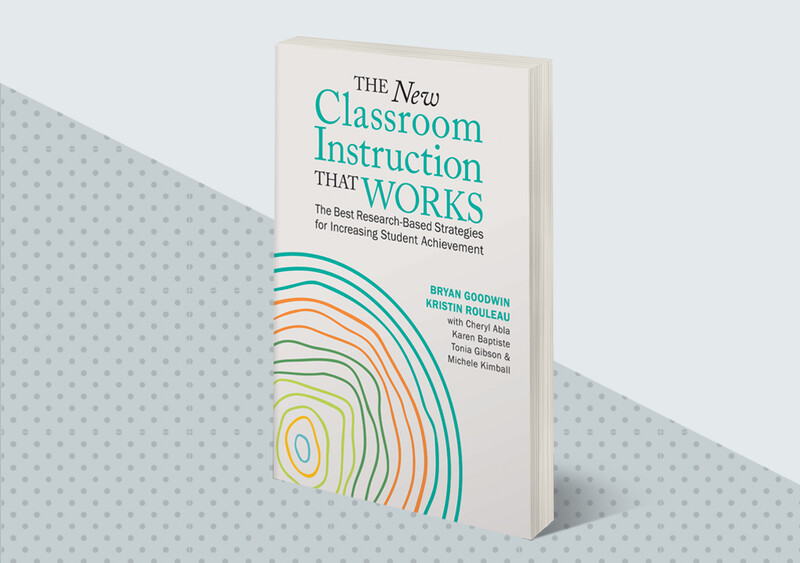When I taught high school, my students recounted the cautionary tale of one of their middle school teachers whose go-to classroom management strategy had been to demand students put their heads down on their desks in silence. After weeks of hapless efforts to create order, he put his own head down on his desk and wept, bringing an unceremonious end to his stint at the school.
I cobbled together enough classroom management strategies to survive my early days as a teacher, but nonetheless felt ill-prepared to manage a classroom—a common plight for new teachers. According to an analysis of preservice programs nationwide, aspiring teachers typically receive scant preparation in classroom management, and what they do receive is rarely grounded in research and often disconnected from classroom practice (Greenberg et al., 2014). Not surprisingly, new teachers' struggles with student behavior rank among the top reasons they leave the profession (Ingersoll et al., 2018).
With that in mind, here are five evidence-based classroom management strategies that can help teachers keep their heads above water (and off their desks) in the classroom.
1. Create Consistent Rules and Routines
The best way to discourage negative behaviors is to encourage positive ones. Teachers can do this by clearly articulating behavioral expectations for students, establishing consistent classroom routines and procedures, and showing students how to follow those routines. These strategies, when used together, have been shown to reduce disruptive behaviors and support better student outcomes (Gage et al., 2018). Nota bene: Class rules are often more effective when created with students, who together (with teacher guidance) identify the behaviors everyone agrees are necessary to support a productive learning environment.
The best way to discourage negative behaviors is to encourage positive ones.
2. Be Aware
Decades ago, Jacob Kounin (1970) coined the term with-it-ness to describe how effective teachers preempt problem behaviors by being constantly aware of what students are doing in the classroom. Modern research puts a finer point on this ability, calling it active supervision. It includes the following teacher behaviors:
Interacting with all students as individuals through greetings and friendly conversation.
Circulating the room and visiting problem areas to redirect unwanted behavior.
Scanning the classroom looking for appropriate and inappropriate behaviors.
Reinforcing positive behaviors through verbal praise and nonverbal affirmations.
A meta-analysis of scientific research found these strategies can significantly reduce problem behaviors (Gage et al., 2020).
3. Build Positive Relationships
Developing strong relationships with students may be one of the most powerful ways to improve student behavior. This can be done relatively quickly, according to a randomized control trial involving 20 teachers and 190 students (Duong et al., 2019). Teachers were taught to use the EMR method to (1) Establish positive relationships with students by "banking time" with them as individuals, (2) Maintain relationships through positive feedback, and (3) Restore damaged relationships through intentional dialogue (such as by letting go of the event, taking ownership of the problem, or validating the student's feelings). Just 13 weeks after they learned the method through a 3-hour professional learning session, teachers saw significant improvements in student engagement and a marked drop in disruptive behaviors.
4. Focus on Positive Feedback
Research has long shown that positive feedback is more powerful than negative; hence, teachers are advised to maintain a 5-to-1 ratio of positive to negative feedback (Flora, 2000). Despite the wealth of research supporting positive feedback, it remains an underused instructional tool in many classrooms (Gage et al., 2018). Of course, teachers must sometimes deliver corrective feedback, but persistent negative feedback has been shown to weaken student-teacher relationships. Moreover, the need to regularly deliver negative feedback may suggest current classroom management and instructional practices are not working (Gage et al., 2018).
Effective teachers preempt problem behaviors by being constantly aware of what students are doing in the classroom.
5. Find the Root Cause of Disruptive Behavior
Research indicates that when students do engage in behavior that warrants corrective feedback, teachers need to understand the root causes of such behavior. As noted in a practice guide from the What Works Clearinghouse (Epstein et al., 2008), students who, for example, demonstrate disruptive behavior during a math lesson may be struggling to master what they're expected to learn. Thus, sending them to the principal's office may only serve to reinforce the negative behavior by giving them exactly what they want: an excuse to avoid math class. On the other hand, when teachers understand why students act out, they can better address student needs and help students understand and regulate their own emotions and behavior.
It Starts in the Classroom
Demanding students put their heads on their desks in silence does not reflect any of these strategies, of course. (It also doesn't get to the root of why students may be unruly.) In my early days as a teacher, I was fortunate to have a principal who urged me to be quick to seek her advice in managing behavior yet slow to send misbehaving students to her office. Doing so, she noted, would send a bit of my own authority out of the room. On top of that, I might miss a teachable moment—an opportunity to help students become better versions of themselves. In many ways, this approach reflects the essence of research on how schools should approach behavior management. They should adopt clear philosophies, procedures, and policies to ensure safe and orderly learning environments, while at the same time helping teachers build their capacity to ensure good behavior starts in the classroom.
The New Classroom Instruction That Works
An all-new third edition provides a rigorous research base for instructional strategies proven to promote meaningful learning.










